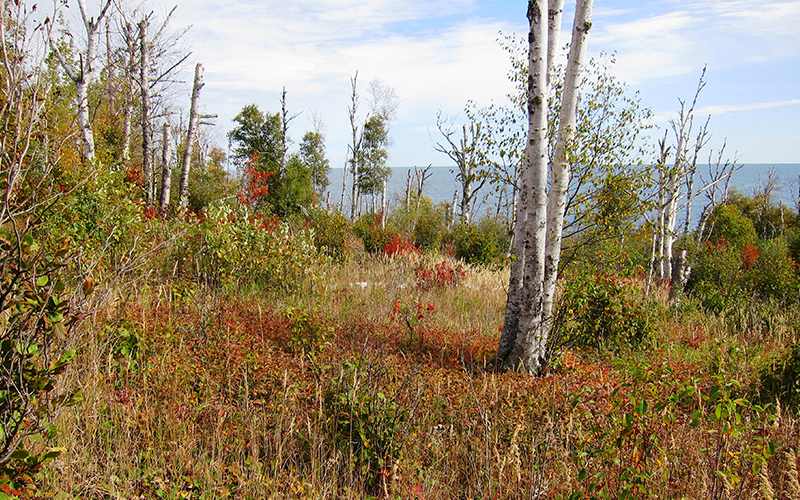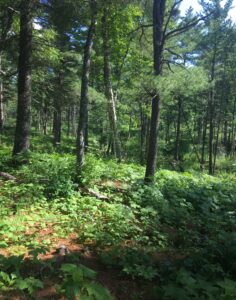
Birch tree decline signals ecological threats to the landscape.
You are driving along the North Shore of Lake Superior in Minnesota, and suddenly you see dying or dead birch trees. Seeing paper birch that are not growing to robust healthy sizes makes everyone concerned. For example, you may see sickly looking trees, with collapsed tree tops, and maybe some re-sprouting around tree bases. All of these symptoms are likely indicators that the birch are the wrong tree-type for the soil conditions in that location.
Why is this happening here? The answers are multi-fold. The birch trees were an early successional species (along with aspen) following the early 1900’s logging and wildfires. But the soils on the North Shore are not always suited to paper birch trees flourishing in some places. You’ll often see that birch tree stands are also located in areas where few other tree species have been able to become established due to environmental conditions, including deer and snowshoe hare browsing. This kind of limited forest diversity is a great threat to North Shore forest ecological health, wildlife habitat and water quality. The North Shore Forest Collaborative is actively working to restore the forest in these locations.
What does a healthy North Shore forest look like?
In simple terms, a healthy North Shore forest will have a variety of native trees and plants that create year-round wildlife habitat from the ground to upper canopy and stabilize soils to reduce erosion and protect water quality. Ideally, this “mixed species forest” will also include longer-lived tree species, such as white pine, white spruce, white cedar, and yellow birch. The North Shore Forest Collaborative focus is on landscape restoration. Planting and protecting multiple native tree and plant species reestablishes biodiversity, creates multiple layers of habitat, strengthens resiliency in the face of a changing and dynamic climate, and restores forest health to the North Shore forest.
